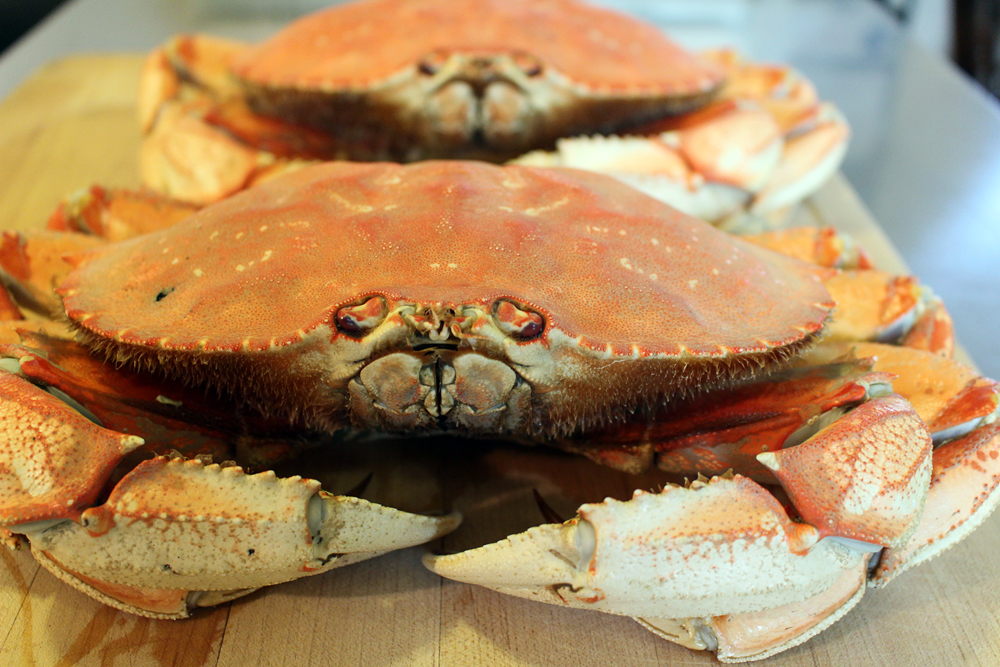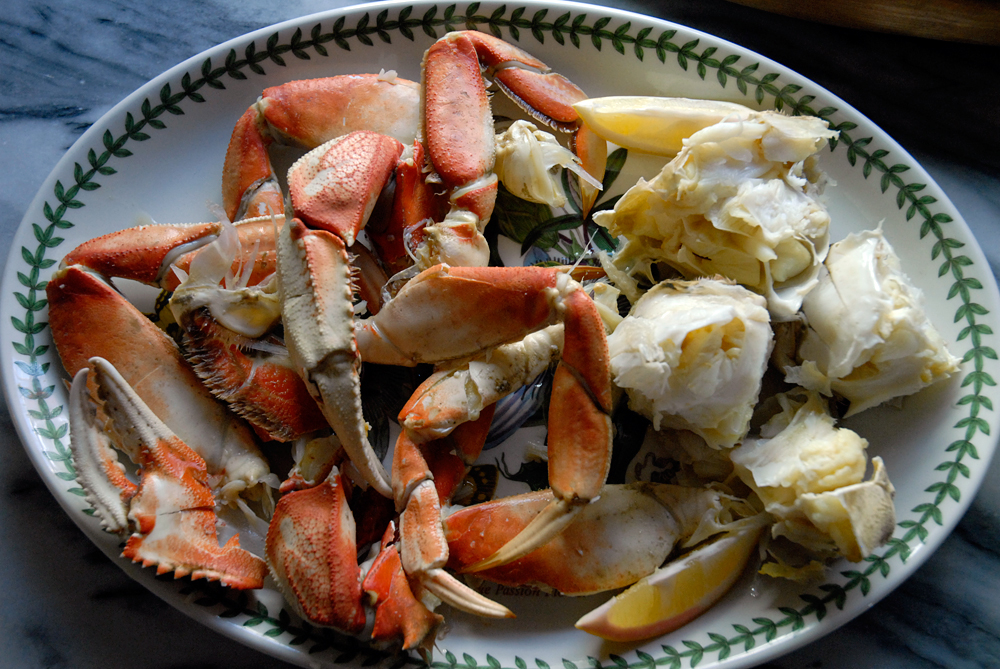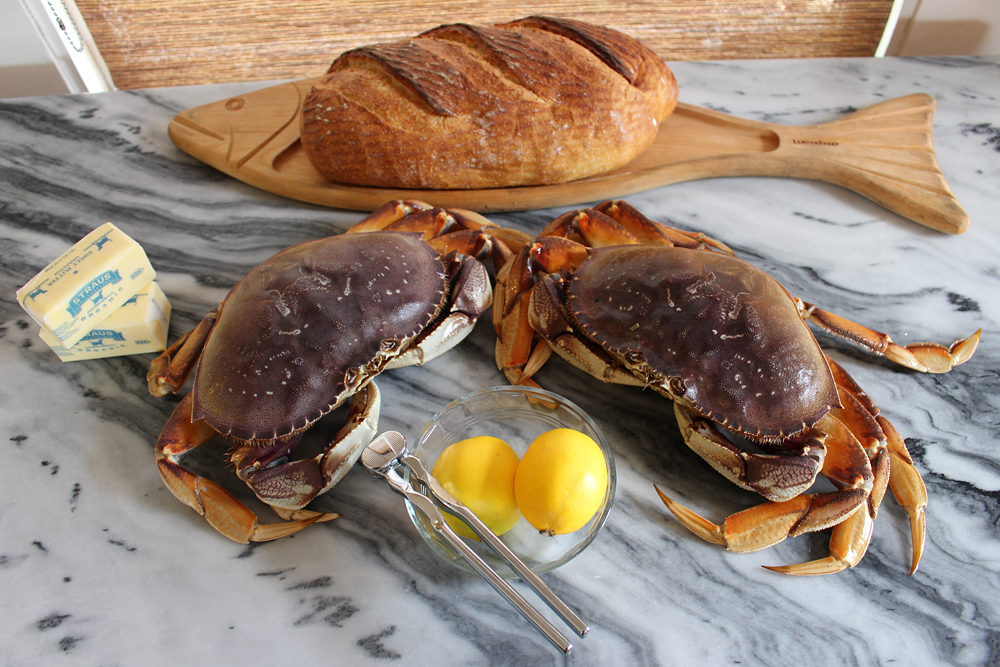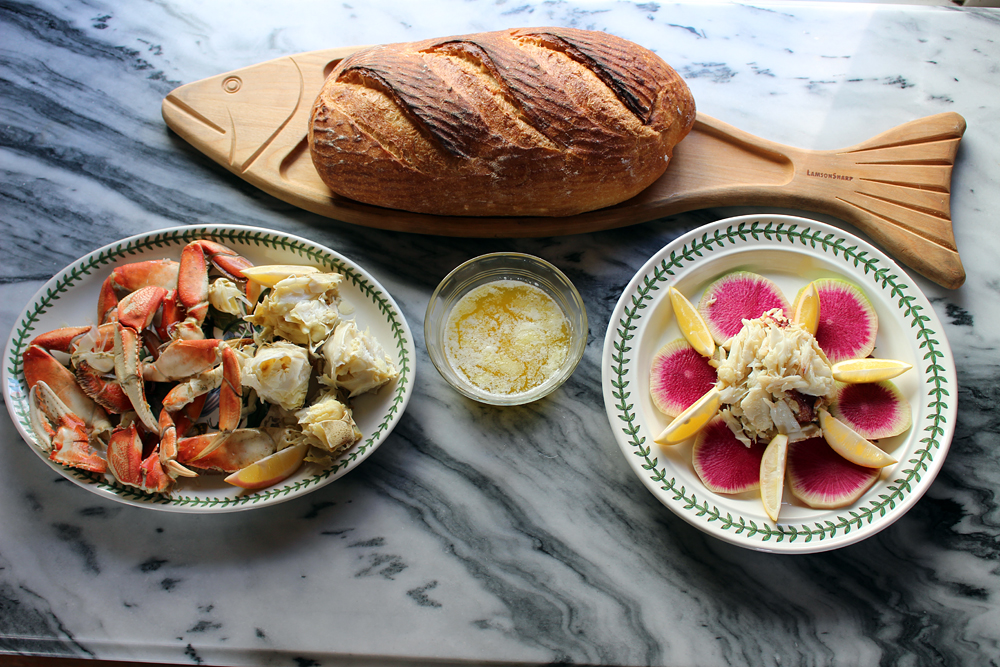
All Photos: Wendy Goodfriend
Happy New Year, newcomers! Welcome to our fine City by the Bay, where lemons grow on trees and fresh Dungeness crab is our favorite winter treat.
San Francisco being the destination city it is, we're pretty confident many of you might be having your first encounter with our signature crustacean this month. Even if you've lived here for a while, chances are you've left the crab-cracking to the experts (or your born-here West Coast friends). But now's the time to get crabby like a local.
Thanks to weeks of mild and mostly storm-free weather since the commercial season opened in mid November, the City's favorite Dungeness crabs are abundant and affordable right now, sold everywhere from supermarket fish counters to speciality fish stores, Asian markets, and yes, from fishermen right off the boats.
The body, shells and claws of a Dungeness are packed with sweet white meat. But how to go from live crustacean to dinner on a plate? There are several ways to take down your crab. We've rated them by Freshness, Squeamishness, Value, and Time.

- Freshness: Fair to Good
- Squeamishness: Low to None
- Cost: High
- Time Investment: Low to None
Picked Crab Meat
If what you need is a pile of crabmeat, fast, and money's no object, then go straight for the high-dollar stuff: straight picked crabmeat. This is expensive--expect to pay upwards of $25/lb--because all the waste (all those shells) and labor (all that picking) it takes to turn a whole crab into a mound of tasty meat. On the plus side, once you've paid, your job is done and your crabmeat is instantly fork-ready. Picked crab is very perishable, so make sure you're buying from a reputable market with high demand and fast turnover. Keep it well-chilled and use within one day of purchase.
Be warned, though: if you invite friends over for a crab feast, they'll expect their crabs shells and all. Getting messy with the crackers and forks is part of the fun. Crab cakes, however elegant, are an appetizer; crab in the shell is a meal.

- Freshness: Fair to Good (look for a busy store that reliably moves a lot of crab)
- Squeamishness Rating: Medium (some work required, but the bulk of mess, including boiling and dismemberment, has been taking care of
- Cost: Medium
- Time Investment: Medium
Cooked, Cleaned, Cracked Whole Crab
Most crab fanciers in the Bay Area pick up their crabs already cooked. Most markets will clean and crack them for you, typically for an additional dollar or so a pound. For cleaned and cracked crab, once you pick out your whole cooked crab, the counter staff will remove the back shell, clean out the viscera and gills, separate the legs, crack the claws, and quarter the body. All that's left for you (or your guests) to do is pick out the meat, either beforehand (if you're planning on making crab cakes, crab Louie, or other dishes calling for straight crabmeat), or at the table.

- Freshness: Best
- Squeamishness Rating: High
- Cost: Medium
- Time Investment: High
Live Crab
The freshest crab is, of course, a live crab. Many fish markets, especially at Asian markets, have live crabs in tanks at this time of year. Make sure your crabs are lively before you buy them, and check to make sure they have all their claws and legs. They should also be heavy for their size, to ensure that they've fully filled out their shells.
Once you've secured your crabs, cook them promptly, preferably within a few hours of purchase. Keep them well chilled until cooking. Store them in an open container (like a loose, open bag or wide bowl) in the refrigerator until ready to cook. They're salt water creatures, so don't immerse them in fresh water, and don't store them in a sealed or tightly knotted plastic bag.

